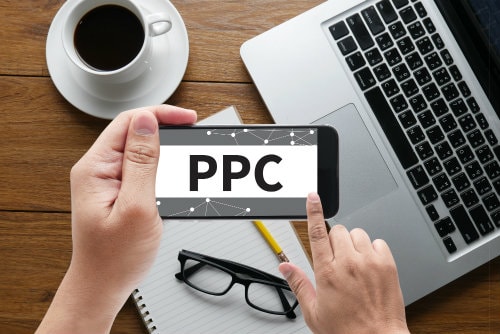Improve your Quality Score to Reduce CPC for Landing Pages
August 17, 2018

What Is Quality Score and Why Improve It?
To put it simply, Quality Score (QS) is defined by Google as a way to show how the overall performance of your ads, keywords, and landing pages are on a scale of 1-10.
While it’s a helpful diagnostic tool, it is neither a key performance indicator nor meant to be a detailed metric for account management.
So, why is it important enough for TSL to mention it and make our clients aware of it?
Because it can have a direct impact on cost per click (CPC) and user experience (UX).
Not only that, but the UX part can have a direct impact on your analytics (clicks, bounce rate, etc.), which can affect your rankings.
With some simple tools/tips, you can save some money, learn to improve your UX for any page, get better ad positions, and see your ads do better in the long run.
What Google’s QS Looks For
It makes sense that Google’s advertising system is set up to identify and reward quality ads (Learn how to check your QS here). Below is a summary of how you can improve your QS:
- Offer relevant, useful, and original content.
- Make sure your landing page is extremely relevant to your ad copy and keywords.
- Your landing page and ad should offer useful features and content that are unique to your site.
- Promote transparency and foster trustworthiness on your site.
- Your LP should make every next step as easy as possible for the user. Make it clear why you’re asking a visitor to fill out a form, ensure that it’s very easy to find your contact information, and clearly share info about your company and what it does.
- Your LP should make every next step as easy as possible for the user. Make it clear why you’re asking a visitor to fill out a form, ensure that it’s very easy to find your contact information, and clearly share info about your company and what it does.
- Make navigation of your site easy for both mobile and desktop users.
- UX is extremely important and can cause some serious negative effects to your analytics, which can affect rankings as well. Make sure visitors don’t have to search for needed information or hunt around for the product you mentioned in your ad.
- Design your landing page to be easily readable and scannable. Make sure your visitors can quickly find the information that brought them to the page by prioritizing the content that's visible “above the fold.”
- Decrease your landing page’s loading time.
- Page speed has a huge impact on UX and can seriously affect your analytics: CTR, bounce rate, etc. According to Google, most sites lose half of their visitors while loading. Make sure your pages load fast when visited, whether on a computer or mobile device. You can check your page speed with PageSpeed Insights.
- Make your mobile site fast.
- According to Google, mobile page speed is a ranking factor now.
- You can use Google tools or other supports that give great insight into speed and how to remedy issues:
- PageSpeed Insights: Reports on the real-world performance of a page for mobile and desktop devices and provides suggestions on how that page may be improved.
- Think with Google: Test your mobile site’s load time.
- Resource article: “Find out how you stack up to new industry benchmarks for mobile page speed.”
- You can enable Accelerated Mobile Pages (AMP). This is an open-source website publishing technology designed to improve the performance of web content and advertisements.
Benefits of Improving QS
Google states that once you make improvements and the ad system revisits to evaluate your pages, you may see higher ad quality and higher ad rank within a couple days or weeks.
However, if you can’t improve ― or simply ignore your landing page issues ― you could be assigned a below-average landing page experience from Google.
Google has a set of advertising policies, and if any page doesn’t follow those rules, the page will be marked as Disapproved and can’t be used. You can tell if an ad is disapproved by the Not Applicable warning in your landing page experience status.
Google Ads Policies
For reference, TSL has provided the four main areas that Google Ads policies specifically cover, with links to details for each:
- Prohibited content: Content you can't advertise on the Google Network.
- Prohibited practices: Things you can't do if you want to advertise with Google.
- Restricted content: Content you can advertise, but with limitations.
- Editorial and technical: Quality standards for your ads, websites, and apps.
If you have any site speed questions or SEO-related concerns, please don’t hesitate to contact TSL Marketing. Learn more about our SEO-related packages by visiting our SEO for B2B Companies page.